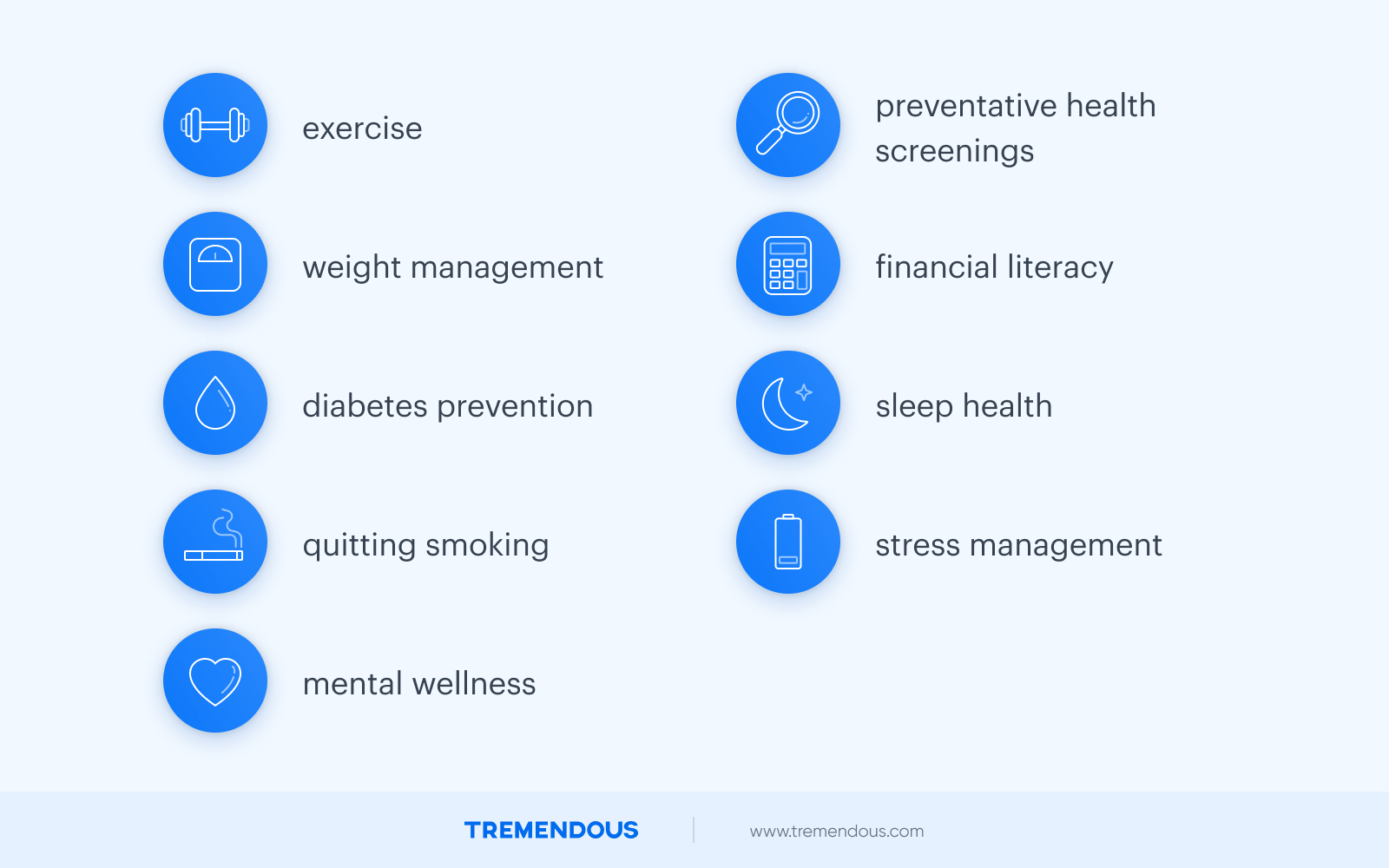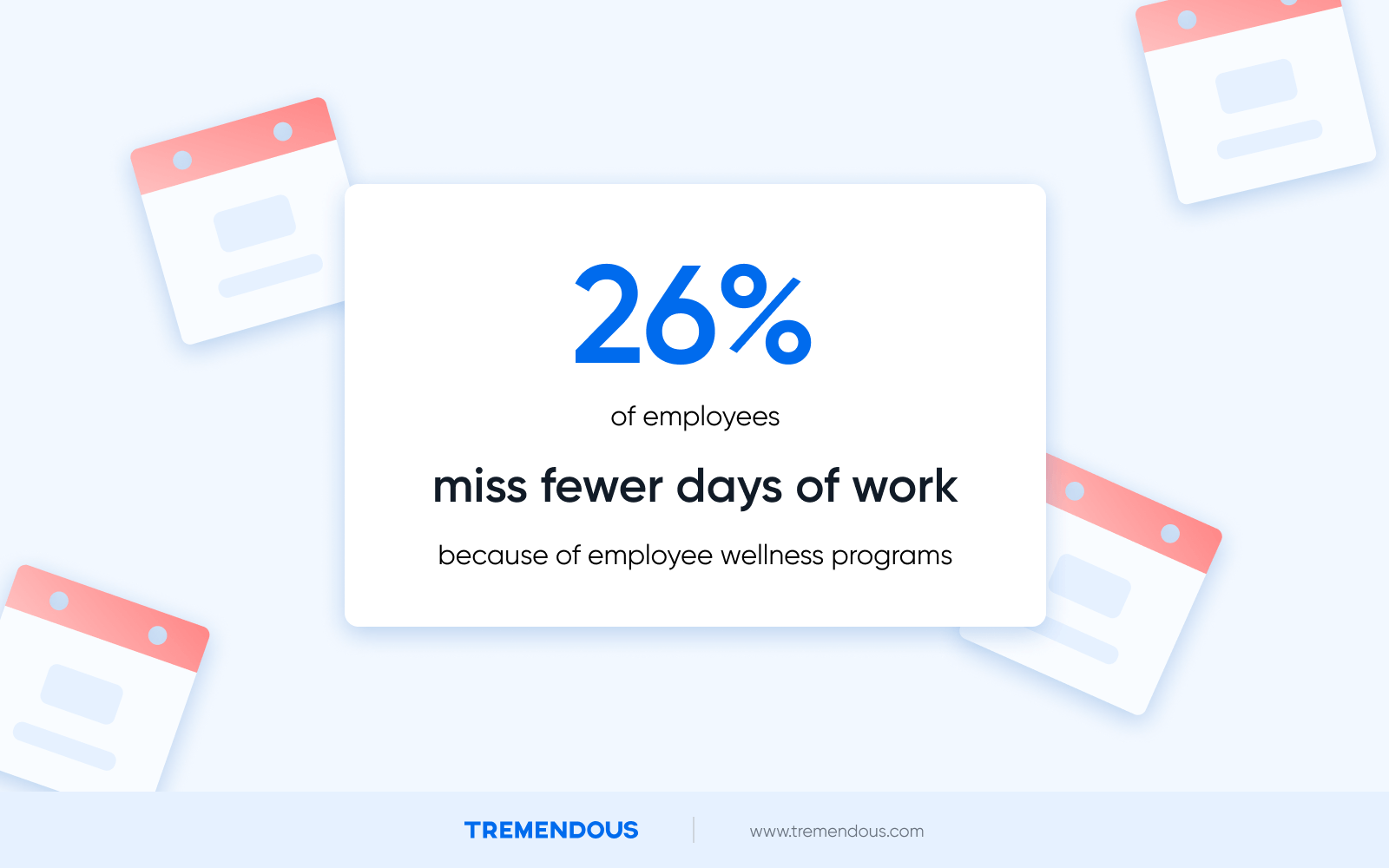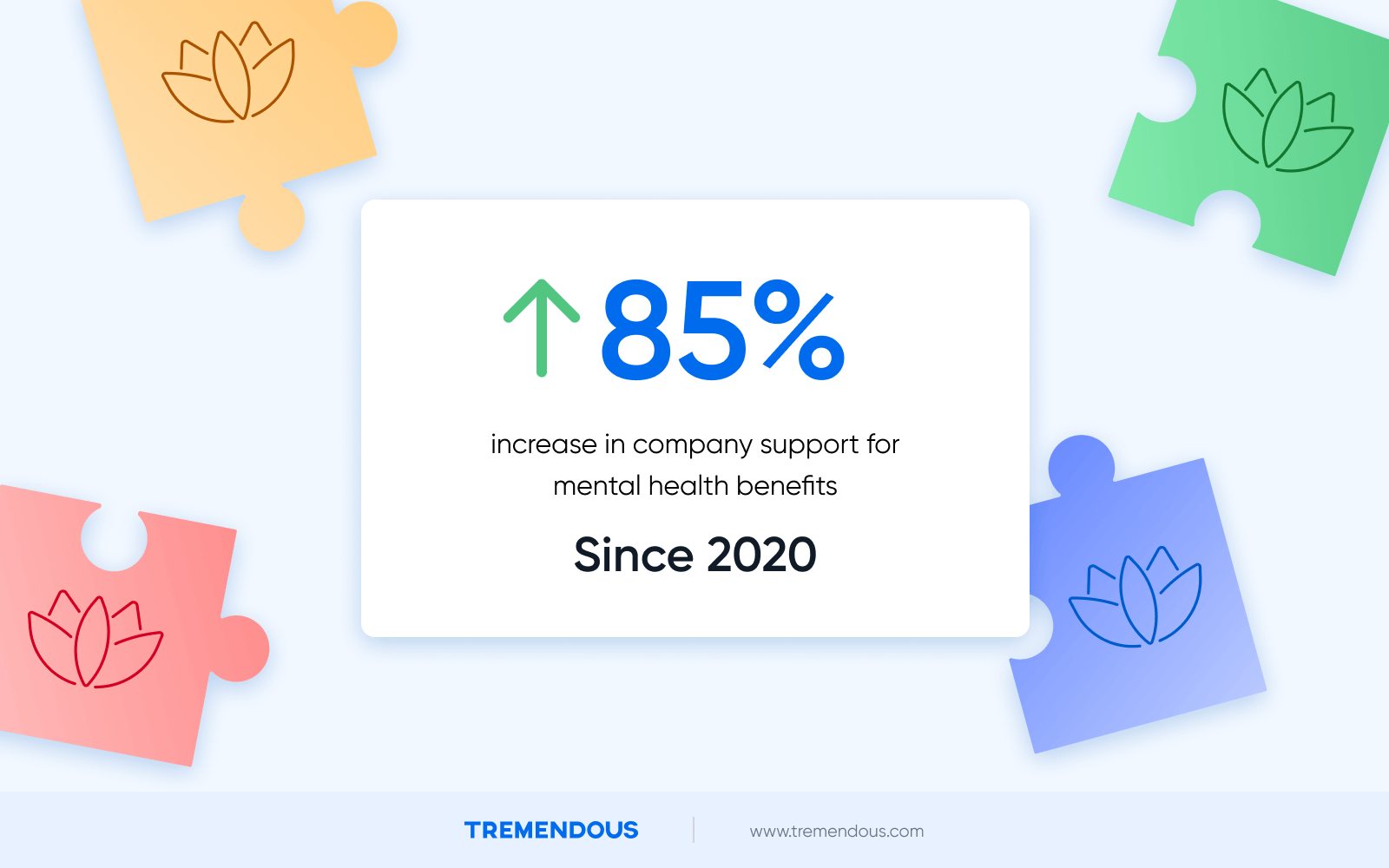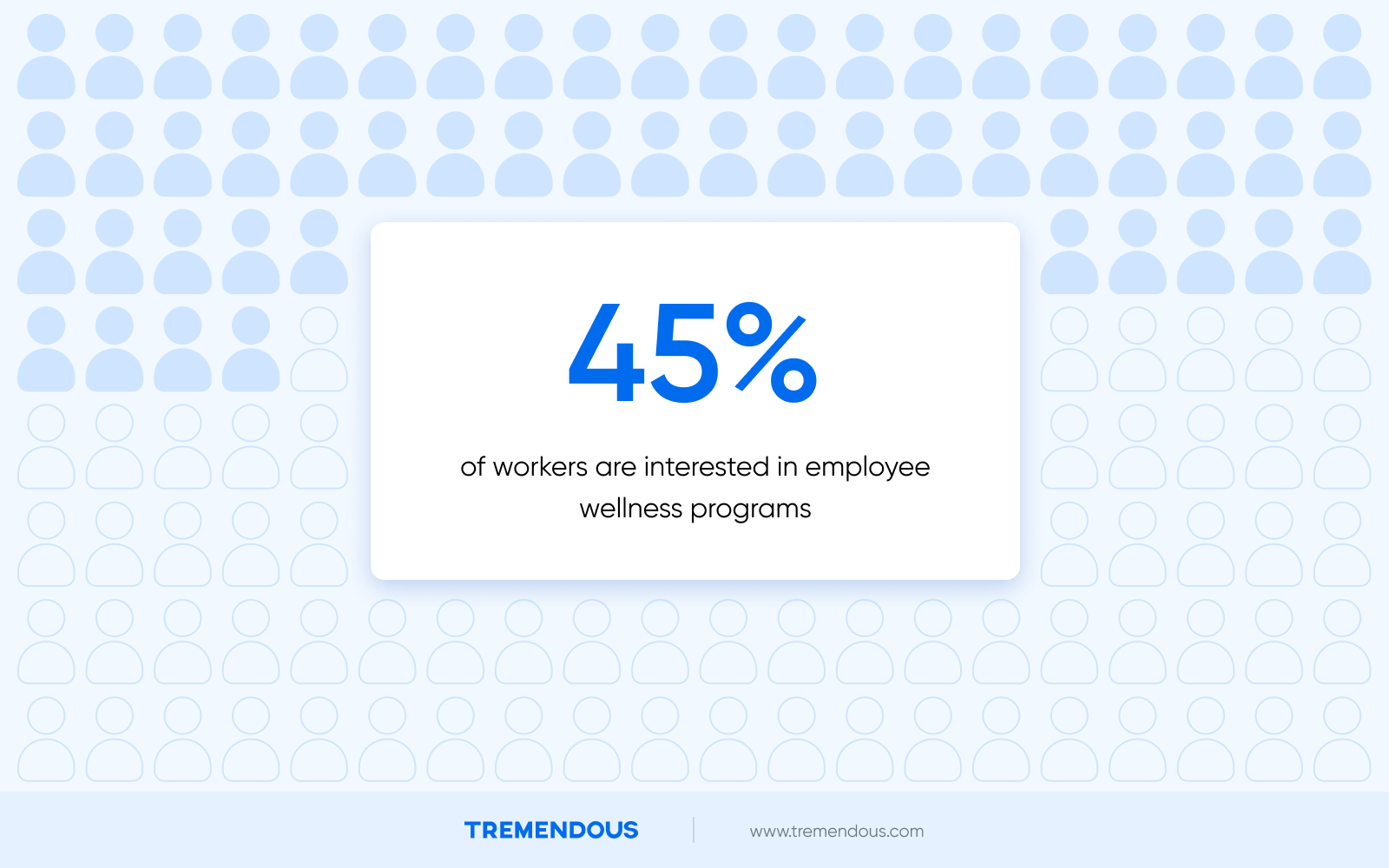An Intro guide to wellness programs
By Kate Monica|5 min read|Updated May 11, 2023

What if you could get 40% of your employees to feel happier and more productive?
One survey found that workplace wellness programs encourage two out of every five workers to work harder and perform better.
Healthy employees are more productive. And they cost less, because employee wellness programs can markedly reduce your bottom line when it comes to insurance payments. Another benefit? Potentially building a better work culture.
We took a look at what works, what doesn’t, and why we think these programs are worth a shot.
What is employee wellness?
Most adults spend a good portion of their waking hours working, and it’s apparent that some working conditions contribute to poor health.
Inactivity at a desk, stressful deadlines leading to unhealthy food choices (who hasn’t taken their woes out on a whole pizza, right?), losing sleep at night, etc.
These factors and more have started a massive shift in the way employers are looking at wellness programs.
Employee wellness programs are a win-win for companies and staff – healthier employees means higher talent retention, increased productivity, and lower insurance costs.
The Principal Financial Well-Being Index cited above shows that because of workplace wellness programs:
40% of workers feel encouraged to work harder and perform better
26% miss fewer days of work
Because of this, more companies are prioritizing the overall health of their employees through work-based wellness programs. The program details vary, but their goals are to promote health through:

Typically, basic wellness initiatives are available through employee’s health insurance plans, but additional incentives from an employer can increase participation.
Maybe you’ve experienced a team fitness competition or been offered a discounted gym membership through work. Some companies even host group yoga sessions or on-site massage services (yes, please!).
This trend has expanded in the last few years to include an emphasis on mental health. A 2020 Gartner survey shows an “85% increase in support for mental health benefits”. Mental health (which used to be a taboo topic in the workplace) has finally become something employers consider an important piece of the wellness puzzle.
Whether employees are remote or in the office, they’re encouraged to take walks during the workday to get exercise, some fresh air, and a brain break from the screens we’re all staring at for hours a day.

Why is employee wellness important?
People want to make their health a priority without risking their jobs.
For decades it’s been ingrained in employees that there’s a hard, fast line. Work comes first, the grind is glorified, and sacrificing your health will prove your loyalty.
Treating your staff like robots will result in them looking elsewhere for a more supportive company.
Investment in employee wellness programs is motivated by:
retaining employees
improving work/life balance
lowering stress
increasing productivity
lowering health care costs
reducing absenteeism
The pandemic and its “return to work” aftermath have only increased the need for companies to pay attention to employee wellness.
According to the Corporate Wellness Market Size and Share Report 2023-2030, “post-Covid worry, stress, and despair have risen as a result of the pandemic and employers will need to spend resources in the future to develop wellness-supportive environments - both physical and mental - in all of their workspaces and locations.”
More research shows that “offering and implementing a wellness program not only can improve an employee's health; it can also inadvertently influence employees' job satisfaction levels within the organization.”
While not all employers offer wellness programs, the Principal Financial Well-Being Index that nearly half of workers surveyed would participate to achieve better overall physical health.

Other top reasons for participation include:
Reduced personal health care costs
Greater chance of living longer and healthier lives
Receiving employer incentives for participation
Reduced stress
Employee wellness metrics
There is no one-size-fits-all wellness program that works across industries, and research shows that the offerings should reflect the concerns of employees.
Companies need to evaluate feedback and track wellness metrics that align with their culture.
From Workplace Wellness Strategies for Small Business, we can see that there are five main concepts to consider when building a custom wellness program:
Innovation: non-traditional approaches and constant iteration
Company culture: employee-influenced ideas and autonomy to make decisions
Employee-centric: a holistic approach to employee well-being where the employer shoulders the financial burden
Environment: incorporates non-work areas designed for well-being
Altruism: encouragement by selfless leadership
Another key to a successful approach - targeted incentives for specific risk groups have shown success.
With creative design, targeted use and evaluation, financial incentives for weight loss and healthy behavior may be a useful addition to the plan. (Financial Incentives for Weight Loss and Healthy Behaviors).
Employers would do better to address individual risk factors and incentivize reductions to those risks.
The most successful programs promote an overall culture of health – leading by example, offering healthy meal options, and encouraging employees to use health tactics that they choose.
People want autonomy – being boxed into a fitness program that they aren’t interested in might make them rebel against the whole idea.
Adding incentives to the toolkit
Incentivizing employees to participate in a heath challenge has shown benefits when it comes to participation. However, the success rates are mixed. One paper explains that the most effective incentives are the ones that address existing barriers and don’t overlap with existing offers. It also mentions that transparency around payments and rewards are key for inspiring action from potential participants.
The takeaway? Making sure your offer is targeted to your audience will make a big difference in the ROI of your wellness program.
“A promising finding of some studies is that people who receive incentives for weight loss shed pounds without additional assistance, such as personalized fitness training and nutrition counseling. Incentive recipients report that they achieved weight loss by modifying their diet (97%) and getting more exercise (86%),” wrote Nola M. Reis in a healthcare policy article.
60% made changes on their own, while 40% took additional steps such as joining a gym or participating in a weight-loss group.
People know what to do to lose weight – they may just need an extra incentive to make real changes.

The bottom line
Happier, healthier employees produce better work and stick around longer.
If your team doesn’t feel valued, they will look for other opportunities, costing your company more in the long run.
Wellness programs are not an easy lift, but crafting one that makes employees feel seen will pay off. Top talent is no longer just looking for a paycheck.
They want to work for a company where the culture is the right fit. Where they can do their best work while also being encouraged to live their best lives.
Published May 11, 2023
Updated May 25, 2023


